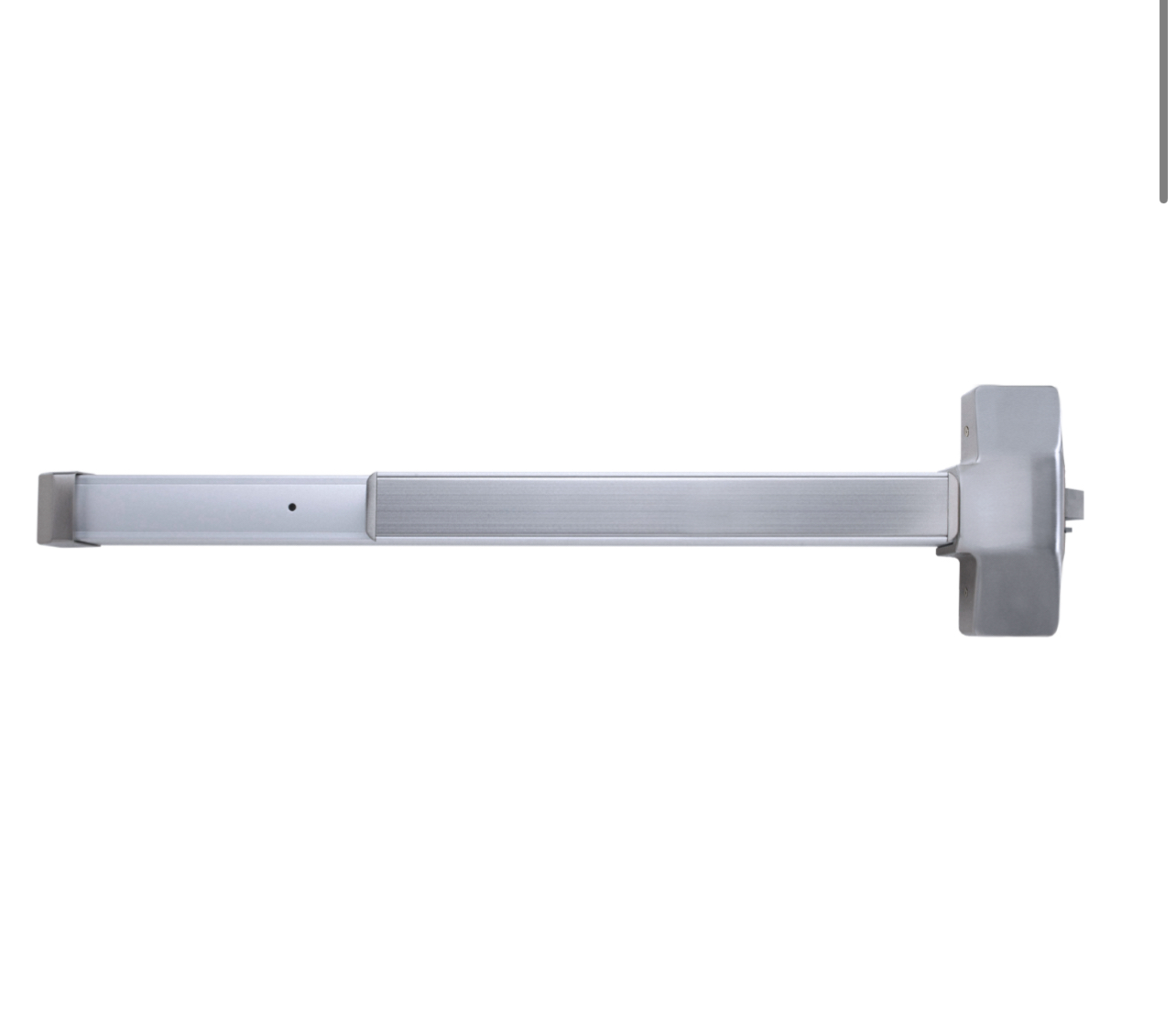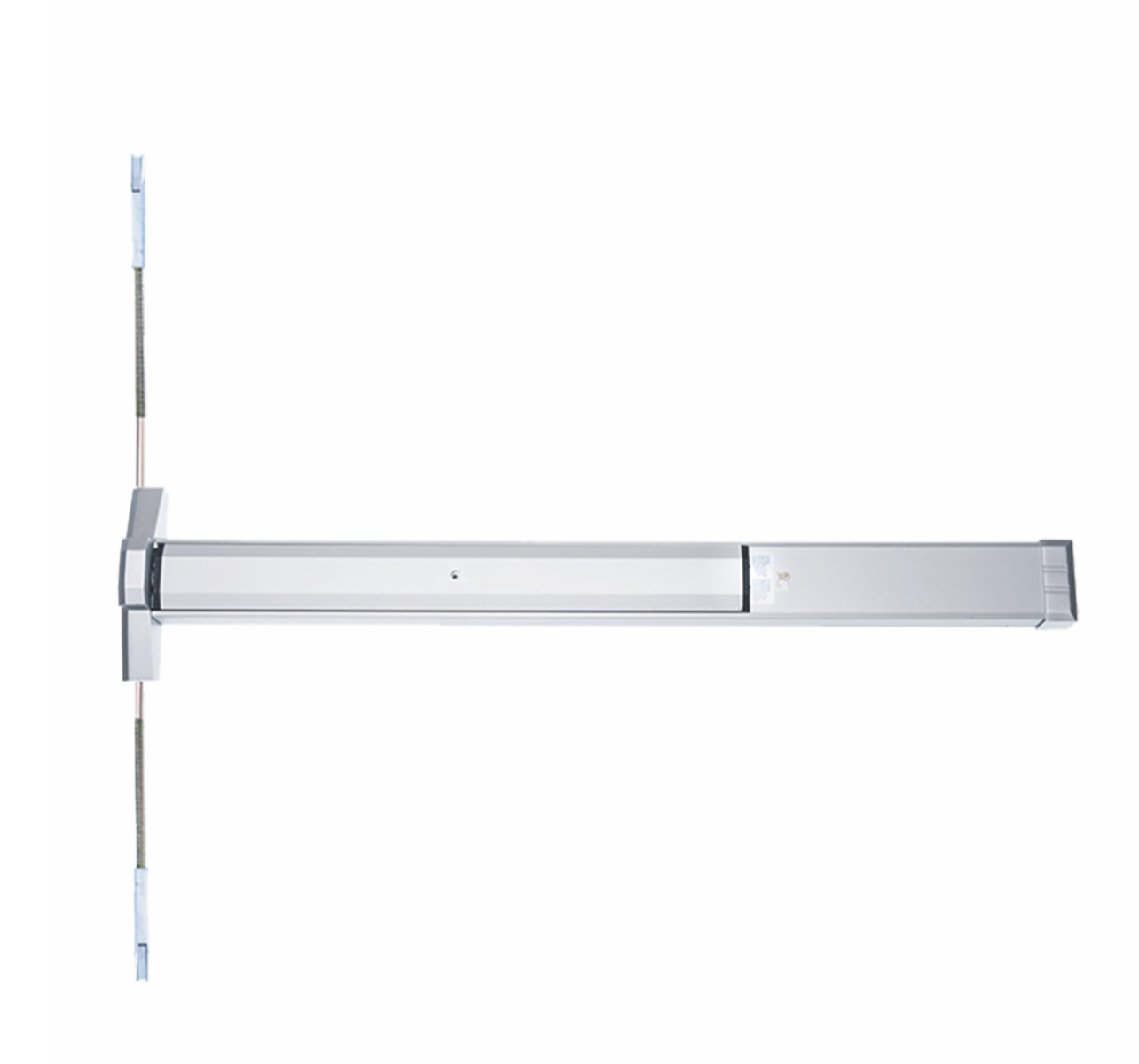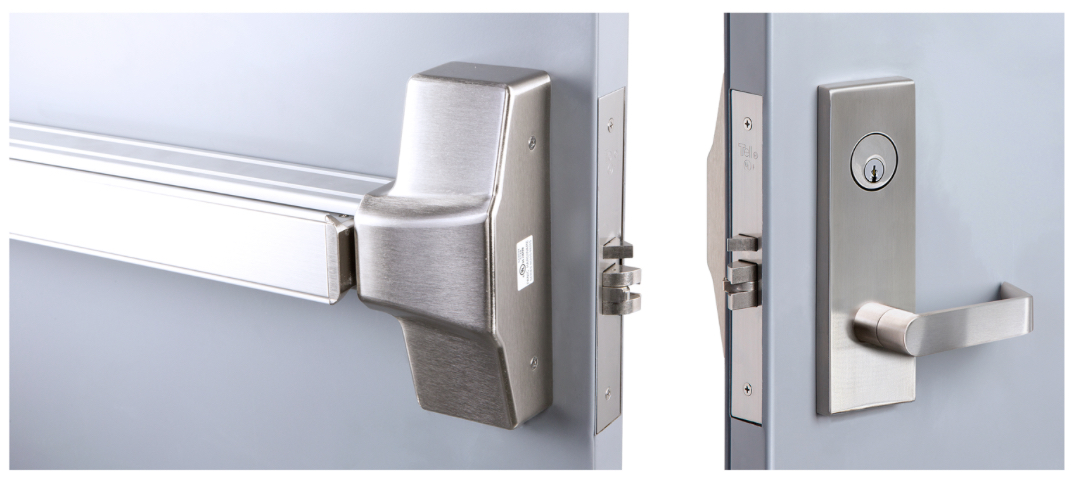Buying Guide For Panic Bars
![]()
Buying Guide For Panic Bars
Panic bars, also known as exit devices or crash bars, are an essential component of commercial doors. They provide a safe and efficient means of egress in case of an emergency, allowing occupants to quickly and easily exit the building. However, with so many types and options available, it can be overwhelming to choose the right panic bar for your commercial door. In this buying guide, we'll explore the different types of panic bars, how to choose the right one for your door, and factors to consider before making a purchase.
Types of Panic Bars
There are several types of panic bars to choose from, each with their own unique features and benefits:
- Rim Exit Device: This type of panic bar is installed on the surface of the door and is typically used on single doors or double doors with a mullion. It is easy to install and maintain, making it a popular choice for many commercial applications.
![]()
- Concealed Exit Device: As the name suggests, this type of panic bar is concealed within the door and frame. It provides a more streamlined look and is ideal for buildings with high-end finishes or where aesthetics are a top priority.
![]()
- Mortise Exit Device: This type of panic bar is installed within the door itself and requires a mortise pocket to be cut into the edge of the door. It is typically used on wooden doors and provides a high level of security and durability.
![]()
- Vertical Rod Exit Device: This type of panic bar has vertical rods that extend from the top and bottom of the door to the floor or threshold. It is ideal for use on pairs of doors or where the door is subject to high wind pressure.
![]()
- Latch Retraction Exit Device: This type of panic bar allows the latch to be retracted by using a remote signal or access control device. It is ideal for buildings that require a high level of security or where access needs to be controlled.
![]()
Choosing the Right Panic Bar
When choosing a panic bar, it is important to consider several factors to ensure that it is the right fit for your door and building:
- Door Type: The type of door you have will determine what type of panic bar you can use. For example, a rim exit device is typically used on single doors or double doors with a mullion, while a vertical rod exit device is ideal for use on pairs of doors.
- Building Codes: Building codes may require specific types of panic bars or may have specific requirements for installation. It is important to consult with a professional installer or building code official to ensure that your panic bar meets all necessary requirements.
- Security: If security is a top priority, you may want to consider a latch retraction exit device or a mortise exit device, which provide a higher level of security than other types of panic bars.
- DurabilityConsider purchasing panic bars from Automatic Door and Hardware. Our panic bars have been tested and certified for durability. They are designed to withstand the wear and tear of regular use and are less likely to fail or break over time. These products have undergone testing in accordance with industry standards such as UL, ANSI, or BHMA.
- CostPanic bars come in a wide range of prices, from budget-friendly options to high-end models. Consider your budget and the specific needs of your building when making a decision. Keep in mind that investing in a higher-quality panic bar may save you money in the long run by reducing maintenance and replacement costs.
- Brand reputationDo some research on the manufacturers of the panic bars you are considering. Look for companies like Automatic Door and Hardware, with a reputation for producing high-quality, reliable products and providing excellent customer service. Read reviews from other customers to get an idea of their experiences with the product and our company.
- Compliance with regulationsFinally, make sure that the panic bars you choose comply with all relevant regulations and codes. This includes local, state, and federal requirements, as well as industry standards such as UL, ANSI, and BHMA. Failure to comply with these regulations can result in fines, legal issues, and safety concerns for building occupants.
Conclusion
A panic bar is an essential safety feature for any commercial building, and choosing the right one requires careful consideration of several factors. By taking into account the specific needs of your building, as well as safety regulations, durability, cost, brand and reputation, you can ensure that you select a panic bar that is both effective and reliable. Remember to work with a reputable and experienced installer, and to schedule regular maintenance and inspections to keep your panic bars functioning properly.
Commercial door panic bars and exit device hardware are available at
www.autodoorandhardware.com.Disclaimer: The material in this article has no regard to the specific installation, building code requirements, law requirements, authority having jurisdiction, local or state requirements, or any particular needs of any viewer. This article is presented solely for informational and entertainment purposes and is not to be construed as a recommendation or solicitation. Nor should any of its content be taken as advice. Automatic Door and Hardware is not an installation advisor. The views expressed in this article are completely speculative opinions and do not guarantee any specific result. Commercial doors, hardware, and automatic door parts should only be worked on by trained, qualified, and licensed professionals; failure to do so can result in danger. Any opinions expressed in this article are subject to change without notice. Automatic Door and Hardware is not under any obligation to update or keep current the information contained herein. Automatic Door and Hardware may have an interest in the securities and commodities of any entities referred to in this material. Automatic Door and Hardware accepts no liability whatsoever for any loss or damage of any kind arising out of the use of all or any part of this material. Automatic Door and Hardware recommends that you consult with a licensed and qualified professional before making any modifications or repairs to commercial doors, automatic doors, or hardware components of those doors. The content covered in this article is NOT to be considered as advice. I’m NOT an adviser. These are only my own personal and speculative opinions, ideas, theories, hypotheses, charts, technical analysis, insights, and curated news publications. The technical analysis in this article is completely speculative and does NOT guarantee any specific result. The technical analysis in this article has NO proven rate of accuracy. Do NOT repair or modify your doors and/or hardware based upon the analysis presented in this article. Always do your own research and only use trained and licensed professionals for any repairs or modifications. I will NOT be held liable for any of your personal repairs or modifications or any losses/damages that you may incur if you do repair or modify your doors and/or hardware. Information provided through this article is provided to you as is without any express representations or warranties of any kind, and we make no representation or warranty that this article (or any information provided in response to your inquiry), will be accurate, complete, or error-free. You agree that you must evaluate all information and responses, and that you bear all risks associated with, the use of this article, including any reliance on the accuracy, completeness, or usefulness of any information or materials made available through this article. This article is purely for entertainment purposes only!







